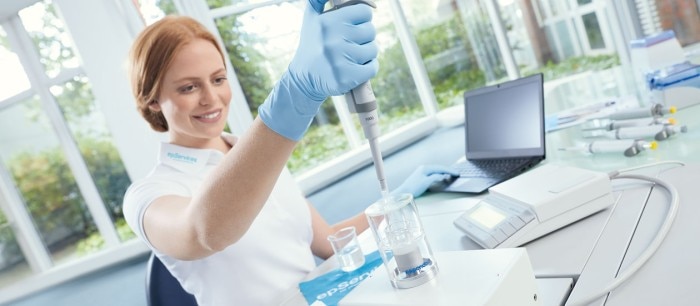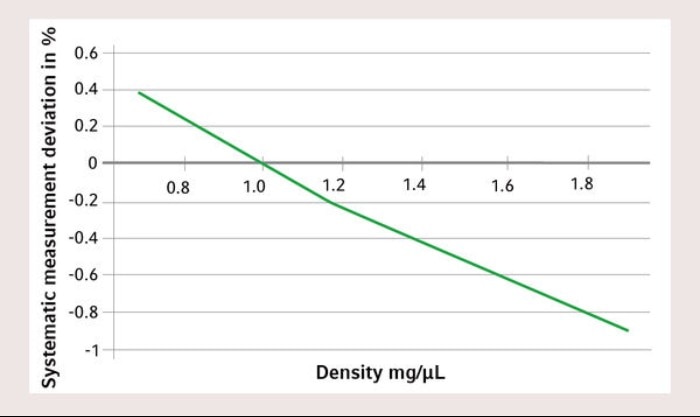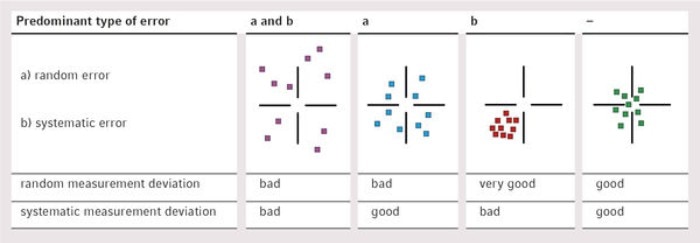MENU
DK | DKK
Logged in as:
DK | DKK
No results found
Search Suggestions

Calibration and Adjustment of Dispensing Systems in the Laboratory
Lab Academy
- Dispensers
- Services
- Pipettes
- Pipetting & Dispensing
- Essay
Calibrating pipettes regularly is important to secure a precise and accurate pipetting result. Executing a proper calibration according to ISO 8655 requires special ambient conditions like a temperature of 15-30 °C and air humidity of ~50 % in the laboratory.
The atmospheric pressure has to be considered for an exact calculation of the systematic and random error. Furthermore a calibrated analytical balance used for calibration in combination with an evaporation trap is essential. The evaporation trap is important when measuring small volumes < 10 µL. Each step of the calibration from pre-wetting the pipette tip, over pipetting angle to dispensing speed is critical and needs careful attention. This text guides you through the background of a good calibration and explains all steps to enable you to perform it on your own.
The figure shows the random and systematic measurement deviation for a 500 μl sample. Pipetting results can be imprecise, precise but inaccurate and ideally precise and accurate.
The figure shows the random and systematic measurement deviation for a 500 μl sample. Pipetting results can be imprecise, precise but inaccurate and ideally precise and accurate.
Read more
Read less

A good calibration can be compared to a target where the bull's eye should be hit and stands for a precise and accurate pipette. Each dot is a single pipetting event. The more distant each dot is from the bull's eye the less precise is the pipette. And the more scattered the dots are, the less accurate is the pipette.
Read more
Read less

Execution of a proper gravimetric pipette calibration using an analytical balance and an evaporation trap.
If you want to read more about calibration and adjustment of dispensing systems in the laboratory, please download our Userguide here!
If you want to read more about calibration and adjustment of dispensing systems in the laboratory, please download our Userguide here!
Read more
Read less
